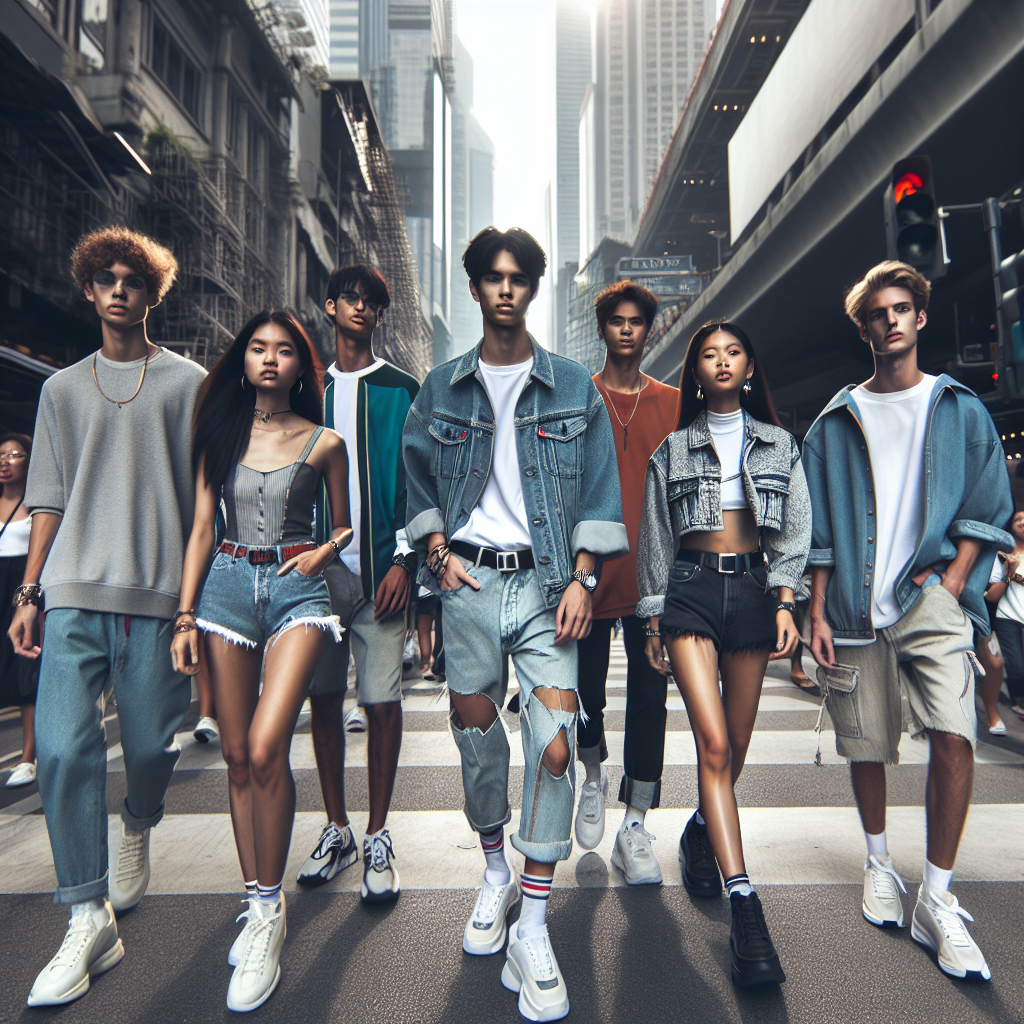The Evolution of Streetwear Culture
Streetwear culture has undergone a remarkable evolution over the years, transitioning from a niche urban movement to a global phenomenon. Originating from the streets of major cities, streetwear has now permeated high fashion, constantly blurring the lines between luxury and everyday wear. What began as a form of self-expression for urban youth has now become a multi-billion dollar industry, attracting attention from both independent designers and established fashion houses.
The evolution of streetwear culture can be traced back to the 1970s and 1980s when it emerged from skateboarding, hip-hop, and surf cultures. Brands like Stüssy, Vans, and Supreme played pivotal roles in popularizing streetwear, introducing graphic t-shirts, hoodies, and sneakers as staple items. The DIY ethos and anti-establishment attitude ingrained in streetwear resonated with a generation seeking authenticity and individuality.
As the 21st century unfolded, streetwear underwent a metamorphosis, blending with high fashion and luxury brands. Collaborations between streetwear labels and prestigious fashion houses became commonplace, leading to limited edition releases and skyrocketing resale prices. The rise of social media also contributed to the global spread of streetwear, with influencers and celebrities promoting and shaping the culture.
Today, streetwear has transcended its origins, shaping the way people dress and influencing mainstream fashion trends. Its evolution exemplifies the fusion of subcultural elements with the mainstream, challenging traditional notions of style and luxury. Whether it’s the allure of exclusivity or the cultural significance attached to streetwear, one thing is certain – it has evolved into much more than just clothing; it’s a cultural movement that continues to redefine the fashion landscape.
The Commercialization of Streetwear: Implications and Impact
Streetwear, once a niche subculture, has now become a global phenomenon, blurring the lines between a grassroots movement and a lucrative commodity. The commercialization of streetwear has inevitably led to both positive and negative implications and impact on the industry and its community. On one hand, the increased accessibility and popularity of streetwear have allowed for greater diversity and inclusivity within the fashion world, breaking down traditional barriers and allowing people from all walks of life to partake in this cultural movement.
However, the rampant commercialization of streetwear has also led to concerns about authenticity and originality. The rapid pace at which trends come and go in the streetwear industry, driven by consumerism and influencer culture, has raised questions about the integrity of the movement. Many argue that the essence of streetwear, rooted in counterculture and individual expression, has been diluted by mass production and excessive branding.
Furthermore, the commodification of streetwear has led to issues of affordability and exclusivity. As luxury and mainstream brands capitalize on the trend, the original community that streetwear emerged from may find themselves priced out of their own culture. This commercial shift has challenged the founding principles of accessibility and self-expression that streetwear was built upon.
In conclusion, while the commercialization of streetwear has undoubtedly propelled it into the mainstream and opened doors for diverse participation, it has also raised significant concerns about its integrity and inclusivity. Striking a balance between commercial success and preserving the authenticity of streetwear will be crucial in shaping its future trajectory.
Authenticity vs. Trend: Exploring the Streetwear Phenomenon
In recent years, streetwear has become a global phenomenon, evolving from a subculture fashion movement to a mainstream powerhouse. One of the core debates within the streetwear community revolves around the concept of authenticity versus trend. Purists argue that authentic streetwear is rooted in counterculture, DIY ethos, and individuality. For them, it’s about expressing personal style and challenging conventional fashion norms. On the other hand, critics contend that streetwear has become more about following trends and capitalizing on consumerism rather than staying true to its rebellious roots.
As streetwear continues to permeate the fashion industry, many brands are navigating the delicate balance between staying authentic to their roots and capitalizing on the growing trend. The rise of collaborations between streetwear labels and high-fashion brands has further blurred the lines between staying true to the movement’s authenticity and embracing the trend-driven nature of the industry. Streetwear’s journey from a subculture movement to a mainstream commodity has sparked discussions about its true essence and whether it’s still a representation of counterculture or simply a trend-driven market.
Ultimately, the dichotomy between authenticity and trend in streetwear exemplifies the complex nature of the phenomenon. While some argue that the authentic spirit of streetwear is being diluted by mainstream consumerism, others see it as a natural evolution that opens the movement to new audiences. Navigating this delicate balance is crucial for the future of streetwear, as it grapples with the tension between staying true to its roots and embracing the commercial opportunities brought about by its widespread appeal.
